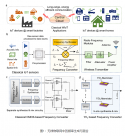Wonder if these patents are being generated because prototypes are now in system optimization phase of development.
At least with immersion lithography most of the new patents that are coming out are ancillary equipment, parts and upgrades, no core parts of the machine. That is one of the reasons I said that they have been running these machines in domestic fabrication lines for the last few years at least, debugging them and solving yield issues with them. These immersion machines have gone from 45nm <the goal of the project in 2017> to 28nm <the upgraded goal in 2020> to 7nm <to match SMEE overlay metrology tools> along with their dry I-Line, KrF, ArF counterpart.

